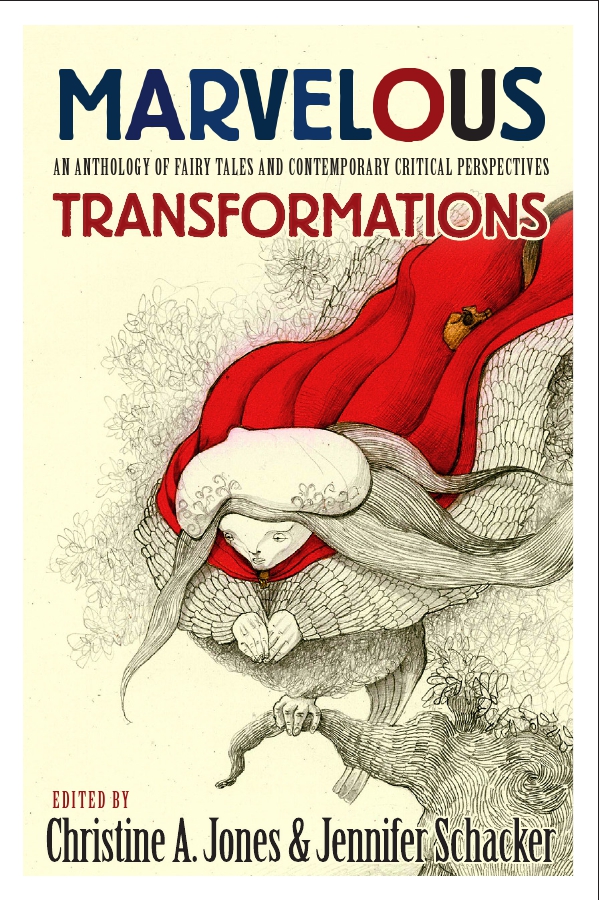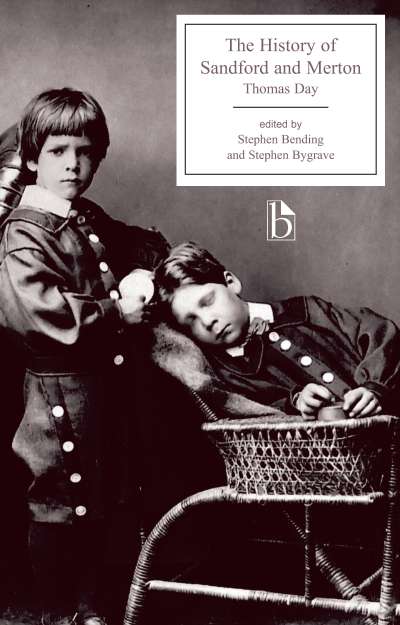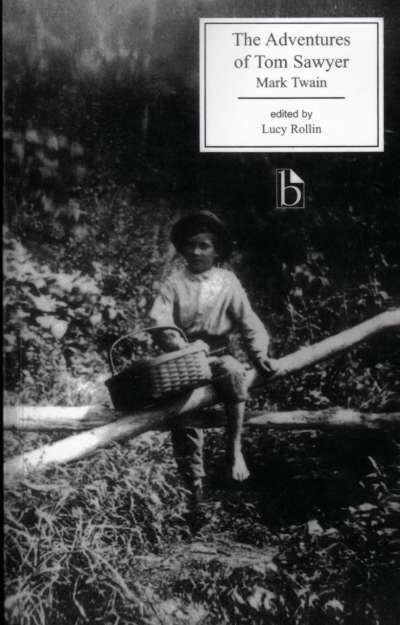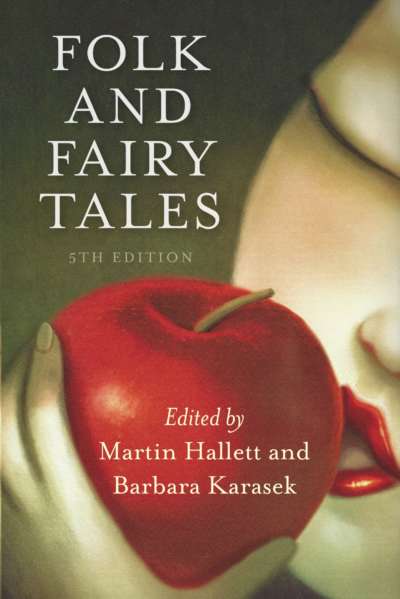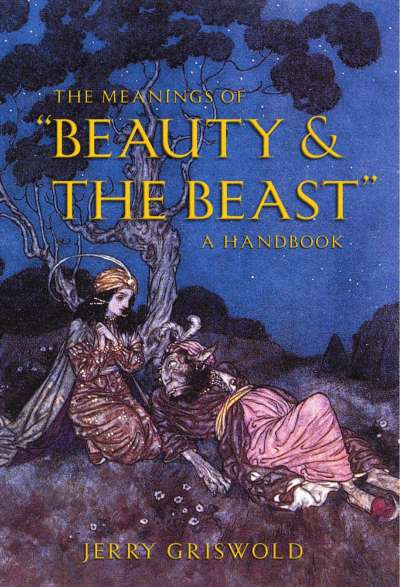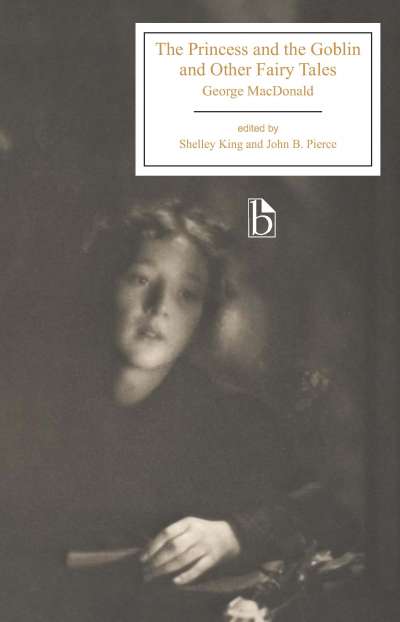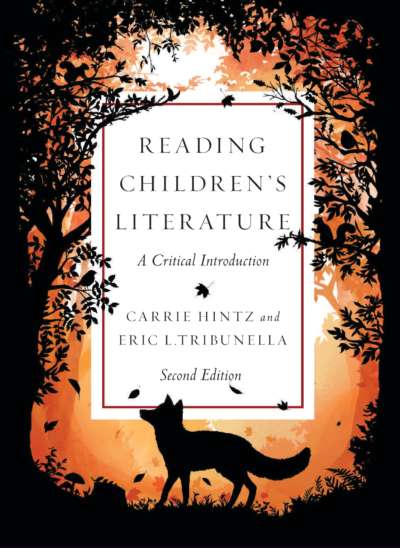Marvelous Transformations is an anthology of tales and original critical essays that moves beyond canonized “classics” and old paradigms, documenting the points of historical connection between literary tales and field-based collections.
This innovative anthology reflects current interdisciplinary scholarship on oral traditions and the cultural history of the print fairy tale. In addition to the tales, original critical essays, newly written for this volume, introduce readers to differing perspectives on key ideas in the field.
Comments
“In the abundant corpus of fairy tale anthologies, Marvelous Transformations stands out in more ways than one. Unlike other anthologies that usually organize their contents according to tale type, motif, or country of origin, the richly diverse collection edited by Christine A. Jones and Jennifer Schacker presents fairy tales in chronological order, thus creating an illuminating timeline that stretches from the 2nd century BCE to the end of the first decade of the 21st century. Envisioned as a ‘journey through fairy tale history,’ Marvelous Transformations is full of pleasant surprises in the form of obscure and rarely anthologized texts, little known writers/collectors, and a series of brand new essays penned by some of the most prominent fairy tale scholars.” — Nada Kujundžic, International Research Society for Children’s Literature
“Christine Jones and Jennifer Schacker have created an unusual and fascinating anthology dedicated to the study of folklore and fairy tales. Instead of collecting a variety of tales from a particular country or from different parts of the world, they have assembled international texts chronologically, from earlier written traditions to contemporary transcriptions and translations. They have also included brief commentaries and essays on important topics. Their aim is to foster an interdisciplinary and historical approach to understanding the complex evolution of a genre, and it is to their great credit that they have produced a most original book that will be useful to readers who seek to grasp the mysterious changes that fairy tales have undergone ever since once upon a time.” — Jack Zipes, Professor Emeritus, University of Minnesota
“We may think we know what fairy tales are and what they mean, but the stories and critical essays collected by Christine Jones and Jennifer Schacker succeed in making the seemingly familiar decidedly unfamiliar. Marvelous Transformations invites readers to discover fairy tales both well known and neglected and, at the end of the volume, a series of short essays that bring together the best of current literary and folkloric approaches to the genre. Students, teachers, scholars—indeed, all readers interested in fairy tales—have much to learn from this volume.” — Lewis Seifert, Brown University
“This volume’s strength lies in both its range of primary source stories and the span of secondary criticism included. With their selection of texts, Jones and Schacker have also attempted to situate fairy tale studies in a broader interdisciplinary context that emphasizes the relationship between literary history and folklore history, particularly field-based oral storytelling.” — Johanna Denzin, Columbia College
“Jones’s and Schacker’s Marvelous Transformations is not simply another fairytale collection but a true contribution to scholarship and a powerful statement on the future of fairytale studies. In weaving together tales from around the world and scholarship from a variety of disciplines, the editors make a strong case for a fresh look at the fairytale form. While I highly recommend this book overall, I especially recommend it for use in classrooms: it demonstrates the diversity, beauty, and endurance of fairy tales and should be a delightful surprise to undergraduates who come in thinking fairy tales are all the sugarcoated Disney stories they remember from when they were small. I am certain that I too will refer back to this text again and again.” — Brittany Warman, Journal of Folklore Research
PREFACE
PART I: THE TALES
- Introduction: “How to Read a Fairy Tale,” Jennifer Schacker and Christine A. Jones
A. EARLY WRITTEN TRADITIONS
- Anon., Egyptian Tales (New Kingdom, Dynasty 19, c. 1298-1187 BCE; translated by Edward F. Wente, Jr., 2003)
The Tale of Two Brothers
- Lucius Apuleius, Metamorphoses (mid-2nd century ACE; translated by Jack Lindsay, 1960)
The Old Woman’s Tale (excerpt)
- Marie de France, “Le Fresne” (c. 1160; translated by Judith P. Shoaf, 1996)
Le Fresne
- Anon., Alf Layla wa Layla (14th century; translated by Husain Haddawy, 1990)
The Story of King Shahrayar and Shahrazad, His Vizier’s Daughter
B. EARLY PRINT TRADITIONS
- Giovan Francesco Straparola, Le Piacevoli notti (1551, 1553; translated by Nancy Canepa, 2011)
Crazy Pietro, Night Three, Tale 1
Costantino Fortunato, Night Eleven, Tale 1
King Pig, Night Two, Tale 1
- R.I. [Richard Johnson], The History of Tom Thumbe, the Little, for his small stature surnamed, King Arthur’s Dwarfe (1621) [website]
- Giambatista Basile, Lo cunto de li cunti (1634-36; translated by Nancy Canepa, 2007)
The Cinderella Cat (Sixth Entertainment of the First Day)
The Old Woman Who Was Skinned (Tenth Entertainment of the First Day)
Cagliuso (Fourth Entertainment of the Second Day)
Sun, Moon, and Talia (Fifth Entertainment of the Fifth day)
- Marie-Jeanne L’Héritier de Villandon, Oeuvres meslées (1696; translated by Robert Samber, 1729)
The Discreet Princess; or the Adventures of Finetta. A Novel
- Catherine Bernard, Inès de Courdoue (1696; translated by Christine A. Jones, 2011)
Riquet à la Houppe
- Charlotte-Rose de Caumont de La Force, “The Enchanter,” Les Contes des Contes (1697; translated by Lewis Seifert and Domna Stanton, 2010) [website]
- Charles Perrault, Histoires ou Contes du temps passé (1697; translated by Christine A. Jones, 2011)
Blue Beard
Cinderella, or the Little Glass Slipper
The Little Red Riding Hood
Sleeping Beauty
- Marie-Catherine D’Aulnoy, Les Contes des Fées (1698)
The Fairies’ Tales (translated by Christine A. Jones, 2011)
Finette Cendron (translated by Elizabeth Lee and Annie Macdonell, 1892)
- Henriette-Julie de Murat, Histoires sublimes et allégoriques (1699; translated by Allison Stedman, 2011)
The Savage, A Story
- Anne-Claude Phillip de Tubière-Grimoard de Pestels Levieux de Lévis, Comte de Caylus, Marquis d’Esternay, Baron de Bransac, Féeries nouvelles (1741; translated by Roswell M. Field, 1917)
Sylvain and Jocosa
- Jeanne-Marie Leprince de Beaumont, The Misses Magazine, Containing Dialogues between a Governess and Several of Ladies of Quality Her Scholars (1759)
Beauty and the Beast
C. ROMANTICISM TO THE FIN DE SIÈCLE
- Johann Ludwig Tieck, “The Elves,” Phantasus vol. 1 (1812; translated by Thomas Carlyle, 1827) [website]
- Wilhelm and Jacob Grimm, Kinder-und Hausmärchen (1812 and 1815, 1819, 1857; translated by Jack Zipes [1987] 2002)
Hansel and Gretel
The Worn-Out Dancing Shoes
Snow White
The Maiden without Hands
Six Swans
- Thomas Crofton Croker, Fairy Legends and Traditions of the South of Ireland (1823)
The Crookened Back
- Hans Christian Andersen, Eventyr, fortalte for børn (1835-45; translated by Tiina Nunnally, 2004)
The Tinderbox
The Princess on the Pea
The Red Shoes
- Peter Christen Asbjørnsen and Jørgen Engebretsen Moe, Norske Folkeeventyr (1845-48; translated by George Webbe Dasent, 1858)
East o’ the Sun and West o’ the Moon
Tatterhood
Little Annie the Goose Girl
- George Cruikshank, “Cinderella and the Glass Slipper,” Gorge Cruikshank’s Fairy Library (1854) [website]
- Aleksandr Afanas’ev, Narodnye russkie skazki (1855-64; translated by Helena Goscilo, 2005)
The Frog Princess
Baga Yagazas
The Maiden Tsar
Danilo the Luckless
- John Francis Campbell, Popular Tales of the West Highlands (1860)
The Story of the White Pet
- Christina Rossetti, Goblin Market and Other Poems (1862)
Goblin Market
- Anne Thackeray Ritchie, Bluebeard’s Keys and Other Stories (1874)
Bluebeard’s Keys (excerpt)
- Mary de Morgan, On a Pincushion, and Other Fairy Tales (1877)
A Toy Princess
- Henriette Kühne-Harkort, Snow White, Freely Adapted from the Grimms (1877, theater script; translated by Shawn C. Jarvis, 2001) [website]
- Luigi Capuana, C’era una volta … fiabe (1882)
The Talking Tree
- Flora Annie Steel and Richard Carnac Temple, Wide Awake Stories, A Collection of Tales Told by Little Children, Between Sunrise and Sunset, in the Panjab and Kashmir (1884)
Princess Aubergine
- Rosamund Marriott Watson, The Bird-Bride: A Volume of Ballads and Sonnets (1889)
Ballad of the Bird-Bride
- Victor Stevens, Little Red Riding Hood, or The Saucy Squire of Sunnydale (1900, pantomime script) [website]
D. MODERN/POSTMODERN TALES
- Daniil Kharms, “A Children’s Story” (c. 1920s-1930s; translated by George Gibian, 1971)
A Children’s Story
- Arkady Gaidar, “Skazka o voennoi taine, o Mal’chishe i ego tverdom slove” (1935; translated by Helena Goscilo, 2005)
The Tale of the Military Secret, Malchish-Kibalchish and His Solemn Word
- Sylvia Townsend Warner, The Cat’s Cradle-Book (1940)
Bluebeard’s Daughter
- Gianni Rodari, Venti storie piu una (1969; translated by Nancy Canepa, 2011)
Nino and Nina
- Anne Sexton, Transformations (1971)
Snow White and the Seven Dwarfs
- Robert Coover, Briar Rose (1996)
Briar Rose (excerpt)
- Nalo Hopkinson, Skin Folk (2001)
The Glass Bottle Trick
- Neil Gaiman, “Instructions” (2000)
Instructions
- Kelly Link, “Swans” (2000)
Swans
- Marina Warner, “The Difference in the Dose” (2010)
The Difference in the Dose: A Story after Rapunzel
E. CONTEMPORARY TRANSCRIPTIONS AND TRANSLATIONS
- John Alden Mason, “Juan Bobo and the Riddling Princess: A Puerto Rican Folktale,” translated by William Bernard McCarthy (2005)
Juan Bobo and the Riddling Princess: A Puerto Rican Folktale, performer unknown (c.1914-15)
- J. Manuel Espinosa, Cuentos de Cuanto Hay/Tales from Spanish New Mexico (1931), translated and reworked by Joe Hayes (1998)
The Enchanted Frog, performed by Alesnio Chacon, 1931
- Linda Dégh, Hungarian Folktales: The Art of Zsuzanna Palkó (1995), translated by Vera Kalm (1995)
The Serpent Prince, performed by Zsuzanna Palkó, 1950
- A.K. Ramanujan, Folktales of India: A Selection of Oral Tales from Twenty-Two Languages, 1991
Hanchi, performed by Chennamma, 1955
- Marius Barbeau, The Golden Phoenix and Other French-Canadian Fairy Tales (1958), retold by Michael Hornyansky
The Princess of Tomboso, performed by Marcel Tremblay, 1916
- Hasan M. El-Shamy, Tales Arab Women Tell, and the Behavioral Patterns They Portray (1999)
The Daughters of the Bean Vendor, performed by Tahiyyah M., 1971
- Donald Braid, Scottish Traveller Tales: Lives Shaped Through Stories (2002)
The Boy and the Blacksmith, performed by Duncan Williamson, 1987
PART II: CONTEMPORARY CRITICAL APPROACHES
Introduction: How to Read the Critical Essays, Jennifer Schacker and Christine A. Jones
GENRE
- On Fairy Tales and Their Anthologies, Christine A. Jones and Jennifer Schacker
Intertextuality, Gina M. Miele
Fairy Tales as Metacommentary in Manga and Anime, Bill Ellis
IDEOLOGY
- Fairy Tales and the Ideology of Gender, Cristina Bacchilega
Ideology, Statecraft, and Subversion, Marina Balina
Ideology and the Importance of Socio-Political and Gender Contexts, Anne E. Duggan
AUTHORSHIP
- Authorship in Oral Narrative, Henry Glassie
The Case of the Disappearing Author, Elizabeth Wanning Harries
Oral versus Literary Tales: A New Approach to Issues of Authorship, Armando Maggi
RECEPTION
- Dear Reader, Donald Haase
The Fairy Tale in Victorian England, Molly Clark Hillard
Sexuality and the Women Fairy Tale Writers of the 1690s, Sophie Raynard
TRANSLATION
- Geographical Translocations and Cultural Transformations, Ruth B. Bottigheimer
The Translation of Enchantment, Nancy L. Canepa
The Wonder of the Arabian Nights in English, Muhsin Jassim al-Musawi
NOTES ON CONTRIBUTORS
Christine A. Jones is Associate Professor of French at the University of Utah. She is the author of Shapely Bodies: The Image of Porcelain in Eighteenth-Century France (University of Delaware Press, 2012) and is currently completing annotated translations of Charles Perrault’s fairy tales.
Jennifer Schacker is Associate Professor in the School of English and Theatre Studies at the University of Guelph. She is the author of National Dreams: The Remaking of Fairy Tales in Nineteenth-Century England (University of Pennsylvania Press, 2003), winner of the 2006 Mythopoeic Scholarship Award.
Marvelous Transformations offers additional readings for both instructors and students.
An access code to the website is provided in all examination copies.

